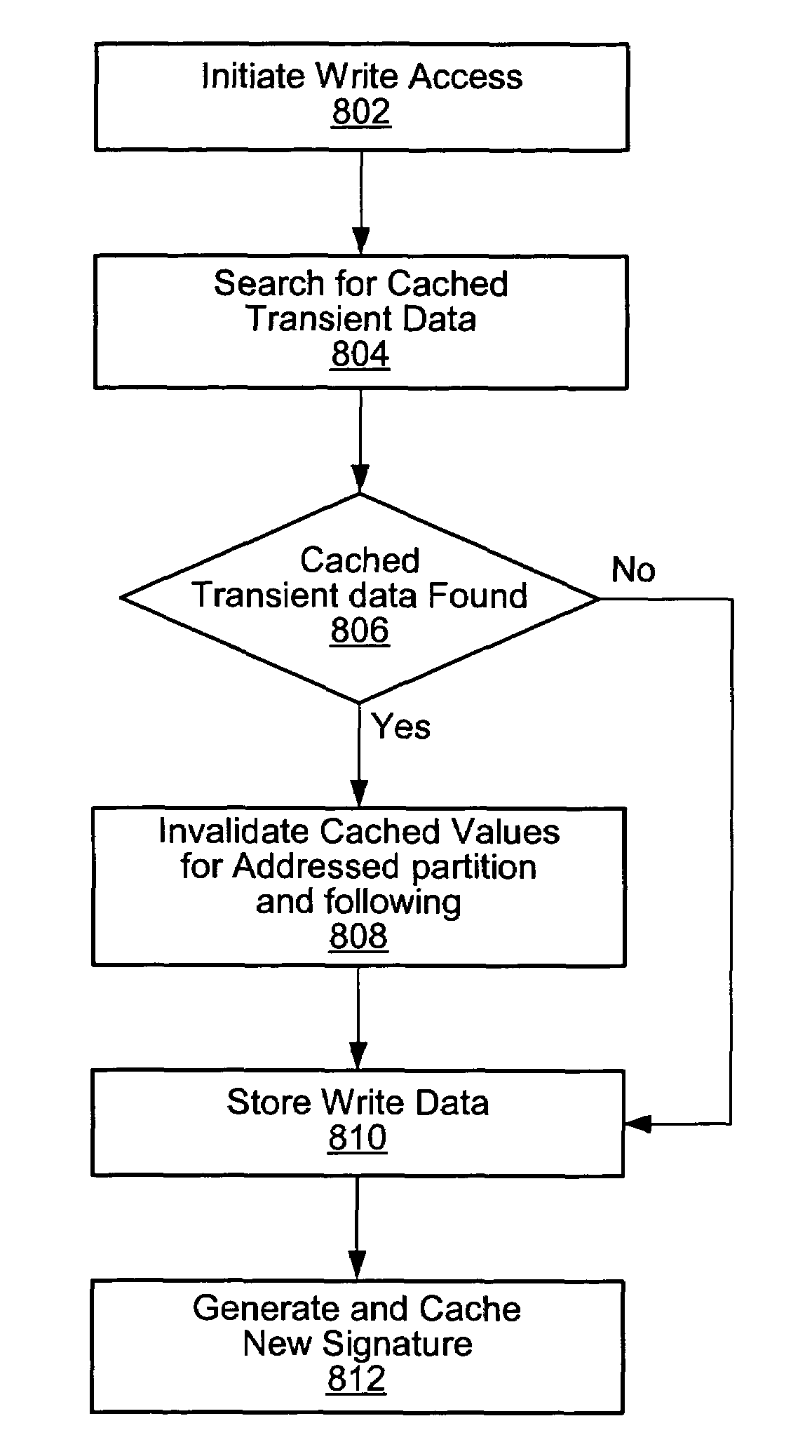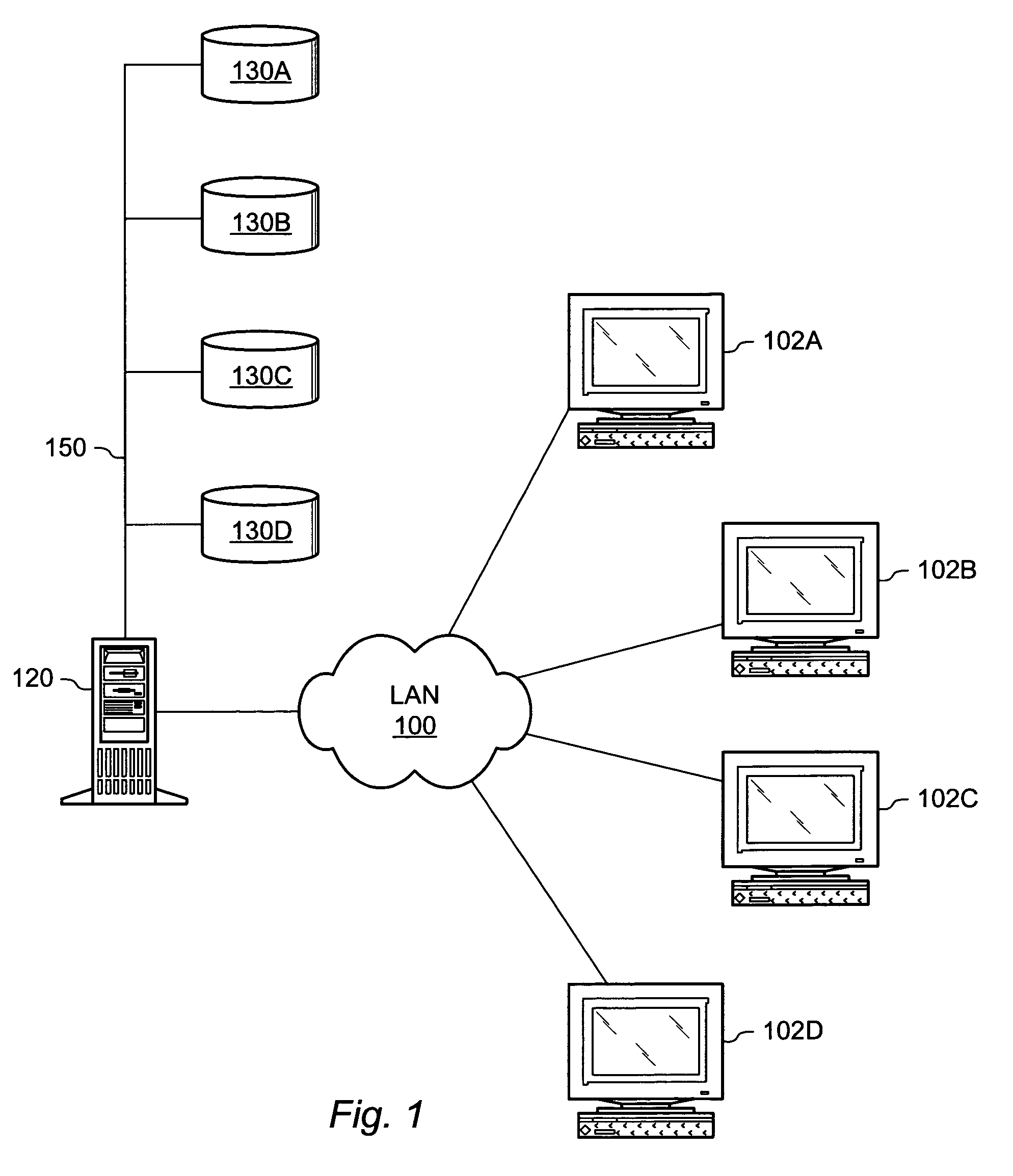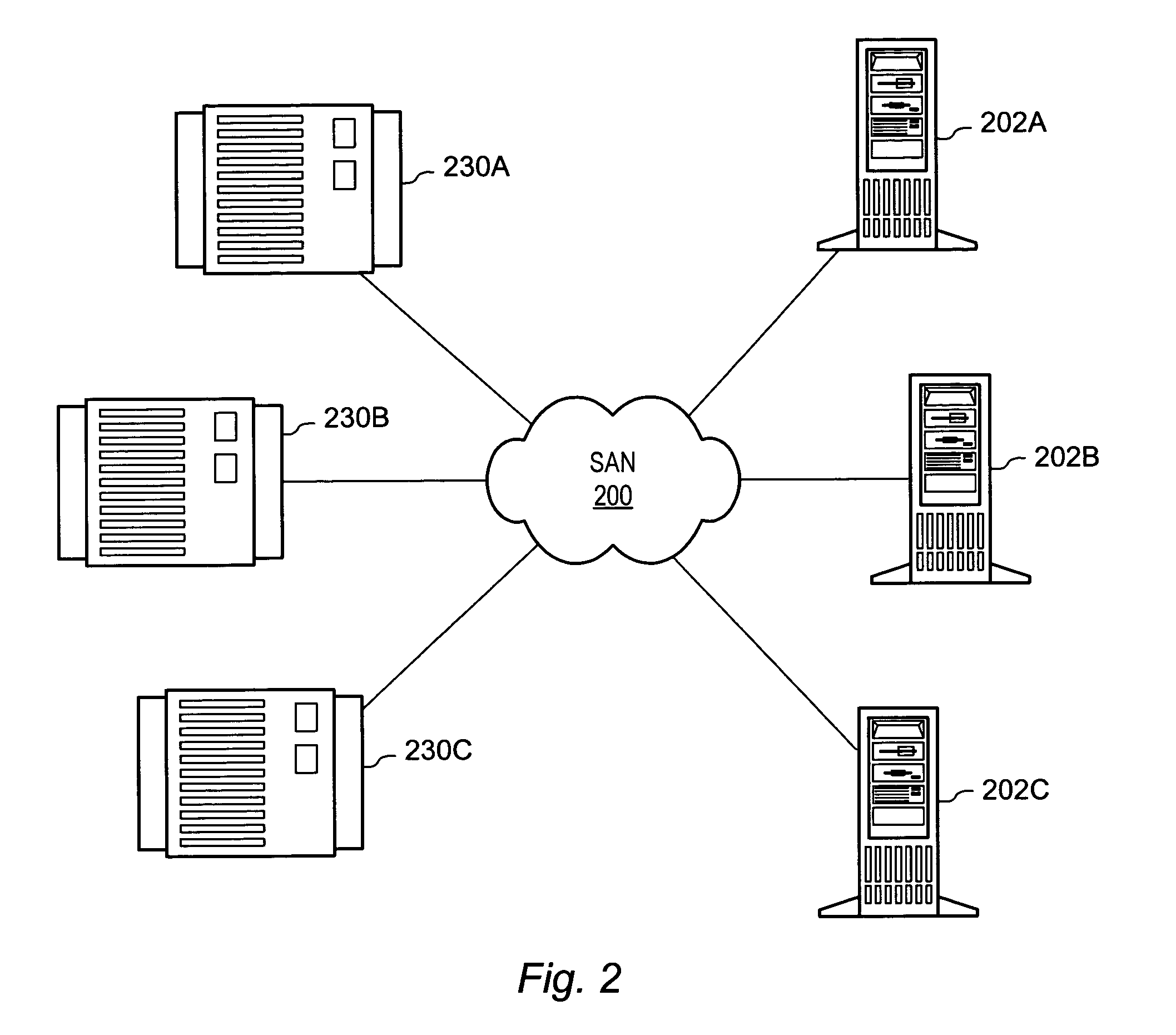Method for computing data signatures
- Summary
- Abstract
- Description
- Claims
- Application Information
AI Technical Summary
Benefits of technology
Problems solved by technology
Method used
Image
Examples
Embodiment Construction
Overview of Storage Networks and File Systems
[0022]Computer networks have been widely used for many years now and assume a variety of forms. One such form of network, the Local Area Network (LAN), is shown in FIG. 1. Included in FIG. 1 are workstations 102A-102D, LAN interconnection 100, server 120, and data storage 130. LAN interconnection 100 may be any number of well known network topologies, such as Ethernet, ring, or star. Workstations 102 and server 120 are coupled to LAN interconnect. Data storage 130 is coupled to server 120 via data bus 150.
[0023]The network shown in FIG. 1 is known as a client-server model of network. Clients are devices connected to the network which share services or other resources. These services or resources are administered by a server. A server is a computer or software program which provides services to clients. Services which may be administered by a server include access to data storage, applications, or printer sharing. In FIG. 1, workstations 1...
PUM
 Login to View More
Login to View More Abstract
Description
Claims
Application Information
 Login to View More
Login to View More - R&D
- Intellectual Property
- Life Sciences
- Materials
- Tech Scout
- Unparalleled Data Quality
- Higher Quality Content
- 60% Fewer Hallucinations
Browse by: Latest US Patents, China's latest patents, Technical Efficacy Thesaurus, Application Domain, Technology Topic, Popular Technical Reports.
© 2025 PatSnap. All rights reserved.Legal|Privacy policy|Modern Slavery Act Transparency Statement|Sitemap|About US| Contact US: help@patsnap.com



